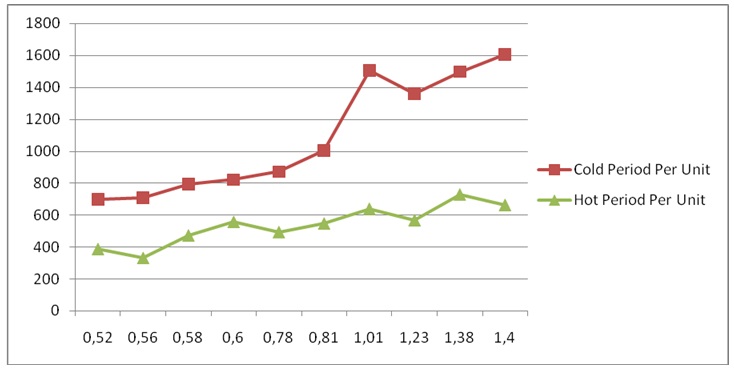Introduction
Energy consumption of the buildings strongly depends on the shape of the envelope surface and the size and shape of the windows. Originally, more complex shapes are regarded as the shapes with less efficient energy consumption, while buildings of simpler shapes are featured as the buildings with more effective consumption.
Analysis
In accordance with the research data, the coefficient of energy consumption depends on the simplicity of the form of the building. Originally, this is explained by the statement that simpler shapes are featured with more effective ergonomics of the buildings, and the space is used more rationally, consequently, the effective energy consumption is increased, while irregular forms (mainly with curved lines like U shapes) consume more energy due to ineffective space allocation. (Science And Technology Policy Institute, 2001) These buildings look more attractive, nevertheless, too much space is spent on the aesthetics, and consumes additional energy. In accordance with Jacobs (2009, p. 87) the following statement should be emphasized:
On an annual basis, buildings in the United States consume 39% of America’s energy and 68% of its electricity. Furthermore, buildings emit 38% of the carbon dioxide (the primary greenhouse gas associated with climate change), 49% of the sulfur dioxide, and 25% of the nitrogen oxides found in the air. Currently, the vast majority of this energy is produced from nonrenewable, fossil fuel resources.
In the light of this statement, effective energy consumption is the matter of asceticism in design, as complex design presupposes ineffective use of the living space, thus, causing increased energy consumption and increased emissions of greenhouse and other gases. (Duan, Yan et al. 2008)
The critical parameter of the energy consumption factors is covered in the shape coefficient value. Thus, independently of the period of the year (either cold or hot), the energy consumption rates will be higher if the shape coefficient is high. In accordance with the research, buildings of complex forms are featured with higher coefficients. The correlation of the shape coefficient and the energy consumption is represented on the chart in Figure 1. In accordance with this data, the energy consumption is defined by the shape coefficient. Thus, the more complex forms are featured with the larger coefficient and higher rates of energy consumption. Originally, the issues of energy consumption in buildings strongly depend on the system of heating. These charts and analyses are correct only for the central heating systems, while complex shapes are often more effective if solar energy is used. (Al-Mofeez and Numan, 2004) Thus, as it is stated by Sachs (2009, p. 78):

If the system relies on a fossil fuel cogeneration plant for heat, the overall efficiency of the plant can increase from 30 to 90 percent. Cogeneration can also reduce emissions per unit of energy produced by 50 to 60 percent. If the district energy system uses a renewable energy source, such as geothermal energy or waste heat, emission levels can be reduced even more.
From the perspective of this statement, it should be emphasized that the values of fuel consumption, and the factors of energy consumption in general should be differentiated, as the actual coefficients may vary if various energy sources are analyzed.
Conclusion
Finally, it should be emphasized that the energy consumption rates strongly depend on the shape coefficient and envelope surface of the building, nevertheless, more complex shapes with curved lines are more effective for sun energy consumption, while they are featured with decreased efficiency of fossil fuels energy consumption
Reference List
Al-Mofeez, I., & Numan, M. (2004). The Effect of Wall-Mounted Oscillating Fan on Energy Consumption in Built Environments. Architectural Science Review, 47(4), 365.
Duan, J., Yan, Y., Zheng, B., & Zhao, Z. (2008). Analysis of the Relationship between Urbanisation and Energy Consumption. International Journal of Sustainable Development and World Ecology, 15(4), 309.
Jacobs, P. (2009). Power Grab: Facilities Departments Combine Sophisticated Technologies with Ordinary Common-Sense Steps to Shave Dollars and Kilowatts off Energy Consumption. T H E Journal (Technological Horizons In Education), 36(3), 28.
Sachs, N. M. (2009). Greening Demand: Energy Consumption and U.S. Climate Policy. Duke Environmental Law & Policy Forum, 19(2), 295.
Science And Technology Policy Institute. (2001). E-Vision 2000: Key Issues That Will Shape Our Energy Future: Analyses and Papers Prepared for the E-Vision 2000 Conference. Santa Monica, CA: Rand.